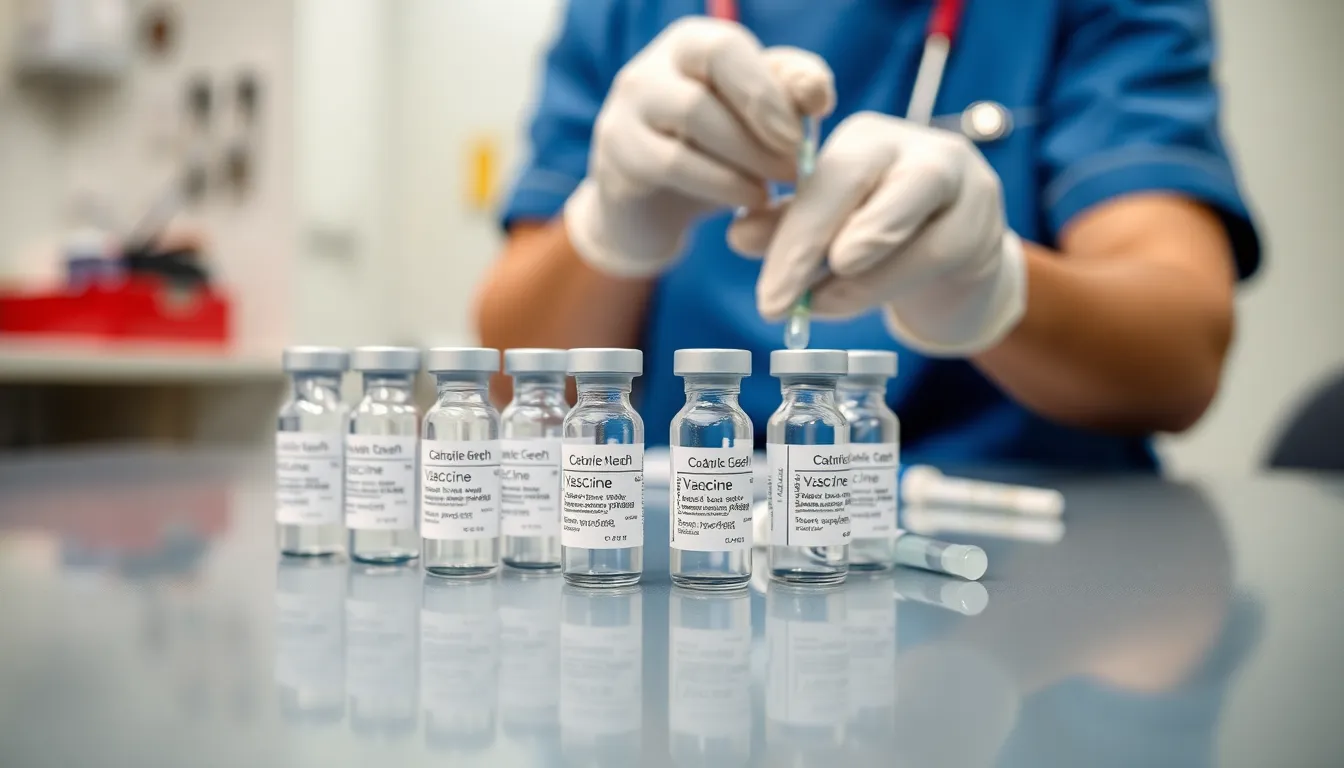Vaccines often get a bad rap, but what’s really in those tiny vials? While some folks might imagine secret potions or alien goo, the truth is far less dramatic. Understanding vaccine ingredients isn’t just for science nerds; it’s essential for everyone. Knowledge is power, and knowing what goes into vaccines can help clear up misconceptions and ease concerns.
From antigens to adjuvants, the components work together like a well-rehearsed dance troupe, each playing its part to keep the immune system in tip-top shape. So, let’s dive into the world of vaccine ingredients and unravel the mystery. After all, it’s not just about getting a shot; it’s about arming yourself with the facts. Who knew learning could be so enlightening—and a little fun too?
Table of Contents
ToggleOverview of Vaccine Ingredients
Vaccine ingredients contribute significantly to their effectiveness and safety. Understanding these components helps consumers make informed decisions about vaccination.
Types of Ingredients
Vaccine formulations contain several types of ingredients. Antigens evoke immune responses, while adjuvants enhance those responses. Preservatives such as thimerosal prevent contamination, and stabilizers maintain the vaccine’s potency. Inactive ingredients like salts and sugars improve the vaccine’s shelf life. Each component plays a specific role in the vaccine’s overall function and safety.
Purpose of Ingredients
Ingredients serve distinct purposes within vaccines. Antigens stimulate the immune system to develop protection against specific diseases. Adjuvants boost the immune response, increasing vaccine efficacy. Preservatives ensure vaccines remain safe and effective throughout their shelf life. Stabilizers protect the integrity of the active ingredients during storage. Understanding these functions clarifies how vaccines work to build immunity.
Common Vaccine Ingredients
Vaccine ingredients play crucial roles in ensuring safety and effectiveness. Understanding these components helps clarify their contributions to immunization.
Adjuvants
Adjuvants enhance the immune response to the vaccine’s antigens. Without them, the body may not generate a strong enough reaction. Common adjuvants include aluminum salts and AS04. These ingredients stimulate and prolong immunity, ensuring a more robust defense against infections. Some vaccines contain oil-in-water emulsions as adjuvants, further bolstering the immune response. Research supports the efficacy of adjuvants in improving vaccine performance.
Preservatives
Preservatives prevent microbial contamination in vaccines. Thimerosal, a mercury-containing compound, is often mentioned in discussions about vaccine safety. Some vaccines, particularly multidose vials, use preservatives like phenol to ensure sterility. Eliminating contaminants reduces risks associated with administration. The CDC confirms that the low concentrations of preservatives used in vaccines are safe for human use.
Stabilizers
Stabilizers maintain the potency of vaccines during storage and transportation. Glycerol and sucrose often serve this purpose, protecting vaccines from heat and freeze damage. These ingredients ensure that vaccines remain effective even when exposed to varying conditions. The stability offered by stabilizers is essential for preserving the vaccine’s intended immune response. Understanding their role helps address concerns about vaccine effectiveness under different circumstances.
Safety and Efficacy
Vaccines undergo rigorous testing to ensure both safety and efficacy. Regulatory agencies assess vaccine ingredients before they reach the public, adhering to strict standards.
Regulatory Standards
Regulatory standards dictate the approval process for vaccines. The Food and Drug Administration (FDA) evaluates vaccines based on clinical trial data concerning their safety and effectiveness. This review includes studies involving thousands of participants. Approval depends on demonstrating that benefits outweigh risks. Additionally, ongoing monitoring continues post-approval. Various organizations, including the Centers for Disease Control and Prevention (CDC), play a crucial role in ensuring vaccines remain safe for public use.
Public Health Implications
Public health implications of vaccines are significant. Vaccination helps control infectious diseases within communities by establishing herd immunity. When a high percentage of the population is immunized, disease transmission decreases. Effective vaccination programs reduce healthcare costs associated with treating preventable diseases. Furthermore, public trust in vaccine safety influences overall vaccination rates. Lower vaccination rates can lead to disease outbreaks, underscoring the necessity of informed public perception and engagement.
Myths and Misconceptions
Understanding vaccine ingredients can help dispel myths surrounding their safety and effectiveness. Vaccines often face scrutiny, leading to common misunderstandings that can hinder public trust.
Addressing Common Misunderstandings
Vaccines contain ingredients that support immune function, but misinformation often clouds public perception. For instance, some people believe that antigens cause the diseases they prevent. In reality, antigens are harmless components that stimulate the immune system. Others fear vaccines contain harmful preservatives in dangerous amounts. Authorities like the CDC confirm low concentrations of preservatives, including thimerosal, are safe. Clarifying these points helps demystify vaccines and encourages informed conversations.
Importance of Accurate Information
Accurate information about vaccine ingredients plays a crucial role in public health. Misinformation can lead to hesitancy, impacting vaccination rates. Research from trusted sources, such as the FDA and CDC, provides insight into the safety and efficacy of these components. With ongoing monitoring, public health agencies ensure the benefits outweigh potential risks. Promoting factual information builds trust and fosters community engagement in vaccination efforts.
Conclusion
Understanding vaccine ingredients is essential for making informed decisions about health. Knowledge dispels myths and reduces fears surrounding vaccination. Each component plays a crucial role in ensuring vaccines are safe and effective.
With rigorous testing and continuous monitoring by regulatory agencies, the public can trust that vaccines are designed to protect against infectious diseases. Engaging with accurate information fosters community trust and encourages higher vaccination rates, which are vital for public health.
By educating themselves about vaccine ingredients, individuals contribute to a well-informed society that values science and health.











